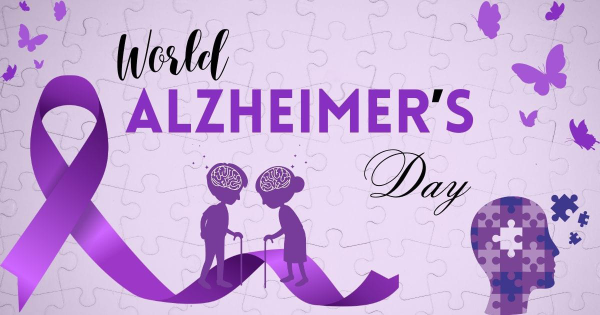.png)
Discover the Person Behind the Pen: Stephanie Flood, RN, BSN
Step into the whirlwind of stories of the delivery as we get to know Stephanie Flood, an author whose words in When There Are Two Patients in One Body have engaged nurses, mothers, and readers around the globe. In this exclusive feature, we delve into the inspirations, passions, and creative processes that breathe life into their unforgettable books and projects. Whether you're a long-time fan or discovering their work for the first time, this is your chance to uncover the magic behind the pen and get a glimpse into the mind of one of Austin Macauley's compelling authors.
What led you to write this book?
I wrote When There Are Two Patients in One Body as a reflection of—and tribute to—my lifelong career as a Labor & Delivery nurse. Every shift brought a different mix of excitement, joy, frustration, laughter, and tears, shared with a wide variety of patients and a steady, dedicated team of nurses, midwives, doctors, techs and secretaries. It was a world where life and complexity collided daily, and it shaped me in ways I’m still uncovering.
This book is my way of honoring the field of nursing as a whole--and Labor & Delivery nursing in particular. Nurses are the backbone of patient care, showing up day after day with skill, resilience and compassion. In Labor & Delivery, we stand at the threshold of life, navigating some of the most profound and complex moments a person can experience. I want to give voice to the work that often goes unspoken. I wrote it to validate that what delivery teams do every single day, deeply matters. Our work is not just clinical; it’s human and deserves to be seen and understood.
Your book shares powerful stories from the delivery room—many filled with joy, others marked by heartbreak. Was there a particular story you found most difficult to write, emotionally or mentally?
Some of the hardest stories to write were those involving abuse, maternal and fetal loss, and certain culturally rooted practices that resulted in lasting trauma. Each carried its own kind of emotional weight and forced me to revisit moments that were not only painful, but profoundly formative—both personally and professionally.
One story that impacted me deeply, early in my career was “The Most Difficult Choice”. It tells the story of a woman diagnosed with aggressive breast cancer in the beginning of her pregnancy. She was offered the option to begin treatment immediately, which would have meant ending her pregnancy—but she chose instead to carry her baby to near term, sacrificing her own life in the process. She passed away a few months after giving birth.
I was a young nurse, and this experience shaped the kind of nurse I would become—one who understood that sometimes the most important thing you can offer is simply to be present. Writing her story stirred up all those early-career emotions—humility, fear, awe and deep reverence. It reminded me that behind every difficult medical decision is a human being facing the unimaginable.
What do you want people, specifically nurses in this field to walk away with after they’ve read your book?
More than anything, I want Labor & Delivery nurses to walk away feeling seen, valued and validated. This work is physically demanding, emotionally charged, and often invisible to those outside the delivery room.
My hope is that readers—especially nurses—see reflections of themselves in these pages: the quiet strength it takes to show up day after day, the grace required to navigate joy and heartbreak, often within the same shift and the profound impact we have on our patients even when we don’t realize it. What we do matters. If even one nurse closes this book with a renewed sense of pride, purpose or permission to feel the full emotional weight of this work, then I’ve accomplished what I set out to do.
I wrote this book for women—and their partners--for the patients in these stories, and for those whose experiences may not include childbirth. Whether you’ve given birth, lost a pregnancy, made an impossible choice, longed to become a parent, or chosen not to—your story matters. I want readers to feel acknowledged, respected and understood.
Whether you’re reading as a nurse, a patient, a loved one, or simply seeking to understand what happens when there are two patients in one body, I hope this book leaves you with a deeper appreciation for the strength, sacrifice and humanity present in every labor and delivery room.
You write candidly about moments of moral ambiguity and raw humanity. What was your goal in exposing both the beauty and the messiness of birth?
My goal was to tell the truth. Birth is beautiful, yes—but it’s also unpredictable, complicated and sometimes heartbreaking. It’s a space where life and death, hope and fear, certainty and confusion often coexist. To show only the beauty would be dishonest. I wanted to honor the fullness of what really happens on the Labor & Delivery unit—not just the polished, celebratory moments, but the quiet moral struggles, the unanswered questions, and the deeply human decisions that nurses, doctors and midwives face.
I remember once standing in a room with a mother who had just given birth to a stillborn baby. The room was silent—no cries, no celebrations. Just grief hanging heavy in the air. A short time later, from down the hall came laughter and loud cheering where a baby had just arrived. Later, that mother told me how painful it was to hear others refer to their newborns as “healthy”—a word that suddenly let loaded, almost cruel, in the wake of her loss. The contrast of unbearable sorrow and such joyful noise was one of the first times I truly understood how layered and contradictory birth can be. As nurses, we move between those rooms all day long.
In what ways do you think birth stories reflect broader societal issues—such as inequality, prejudice, or access to care?
Birth doesn’t happen in a vacuum. Every patient who walks—or is wheeled—into a delivery room brings with them the weight of their lived experience, including how society has treated them. In Labor & Delivery, those broader issues show up in real time: who receives respectful care, who gets listened to, who is dismissed or judged, and who faces more medical risks simply because of their race, background or socioeconomic status.
I’ve seen firsthand how implicit bias, language barriers and systemic inequities can shape outcomes, not just clinically, but emotionally and psychologically. I’ve cared for women who were terrified to speak up, partners who felt invisible and patients who had to fight to be believed. These are not isolated moments; they are reflections of much larger patterns in healthcare and in society.
By sharing these stories, I hope to shine a light on the injustices that often go unnoticed in the delivery room—and to challenge the idea that birth is always an equalizing experience. It’s not. But it can be a place where healing begins, if we’re willing to listen, reflect and do better.
If you could leave one message for every expecting parent who reads your book, what would it be?
While this book highlights some of the more complex and emotional realities of childbirth, I want to emphasize that most deliveries are straightforward, smooth, and filled with joy. The majority of births unfold safely, supported by skilled teams who are trained for both the ordinary and the unexpected. My intention isn’t to create fear, but to offer honesty and perspective. Understanding the full picture can help you feel more grounded, more prepared and less alone.
You are allowed to feel everything. Birth is not just a physical event--it’s emotional, unpredictable, and deeply personal. There is no “right” way to give birth and no one version of strength. You don’t have to be perfect, brave, or calm all the time.
I hope this book reminds you that behind every monitor and medical decision, there are people—nurses, doctors, midwives—doing their best to care for not just your body, but your heart too.
You credit a nurse named Karen for inspiring your career path after your own traumatic delivery experience. How do you hope your book might “pay it forward” to the next generation of nurses?
Karen changed the course of my life by simply showing up with compassion, competence and calm during one of the most vulnerable moments I had ever lived through. That experience planted the seed that eventually grew into a 30+ year career in Labor & Delivery nursing.
I hope this book becomes that kind of spark for someone else. I want new and future nurses to see the power they hold—not in dramatic heroics, but in the quiet, consistent presence they bring to each room, each patient and each decision. My goal is to offer a window into the reality of this work: the beauty, the mess, and uncertainty and the meaning that lives in between.
If this book gives one nursing student the courage to stay the course, helps one young nurse feel less alone on a hard shift, or reminds a seasoned nurse why they fell in love with this work in the first place—then I’ve paid forward what Karen gave to me.
Who is Stephanie?
Stephanie is a lifelong nurse, a mother, and a grandmother. She devoted her nursing career to supporting women and their families through labor, birth and loss. She is a strong advocate for compassionate care and a fierce believer in the power of presence.
Now retired, Stephanie loves spending time with her husband, adult children and grandchildren. She’s a dedicated cyclist, yogi, traveler, daily meditator and voracious reader.
We use cookies on this site to enhance your user experience and for marketing purposes.
By clicking any link on this page you are giving your consent for us to set cookies



